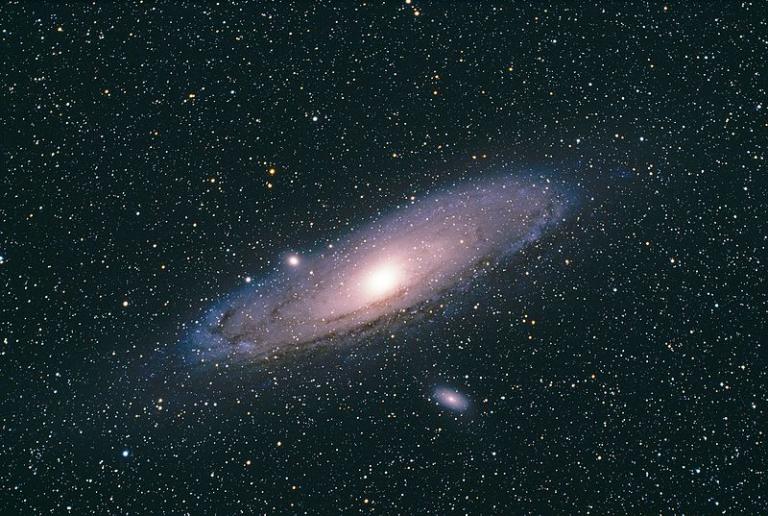
(Wikimedia Commons public domain image)
Another attempt to help us imagine the sheer unimaginably astounding size of the cosmos, from Chris Impey, University Distinguished Professor and Deputy Head of the Department of Astronomy at the University of Arizona, in his book How It Began: A Time-Traveler’s Guide to the Universe (New York and London: W. W. Norton and Company, 2012), 98:
We live in a city of light. To grasp the vastness, we need a scale model. We can get there in two steps. In the first step, we’ll shrink objects and space by a factor of 10 million. The Earth is an apricot, and the Moon a pea at arm’s length. This cozy arrangement is the full extent of human voyaging. On this scale, the Sun is a 10-foot globe 100 yards away, while the nearest star is 30,000 miles away. With this scale model, most stars are still unimaginably far, so we shrink space again, this time by a factor of 100 million. Stars are now the size of atoms, and a solar system is contained within a region of space the size of a small grain of sand. The typical distance between stars is 30 feet and the Milky Way galaxy is the size of the continental United States. This city of light holds many billions of stars. A legend on this map would read 1:1015, or 1 inch equals 1 light-month.
And he’s only talking about our own galaxy here. There are at least one hundred billion — that’s 100,000,000,000 — galaxies in the observable universe. To say nothing of regions that we cannot observe.
***
My Deseret News column for the week has now appeared:
“Somewhere, William Paley is smiling”
***
In his De incarnatione, the famous fourth-century theologian and bishop of Alexandria St. Athanasius, explained that humanity had been created by God so that, “by looking into the heights of heaven, and perceiving the harmony of creation, they might know its ruler, the Word of the Father, who, by his own providence over all things, makes the Father known to all.”
“God,” wrote the distinguished Canadian Jesuit philosopher Bernard Lonergan (1904-1984), “is the unrestricted act of understanding, the eternal rapture glimpsed in every Archimedean cry of Eureka.” (Bernard Lonergan, Insight: A Study of Human Understanding, 2d ed. [New York: Philosophical Library, 1958), 684.
***
Meanwhile, in science news:
Incidentally, it’s instructive that this newly-found black hole was not located by direct observation, but, rather, by deduction or inference from its effects on other objects.











